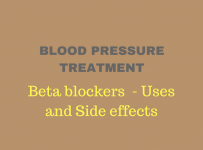Bleeding from superficial injuries like shaving nicks and cuts is usually minor and it could be safely treated at home. It is advised that a well-equipped first aid kit is always available and easily accessible. Special attention is needed in case you receive blood thinners or have a bleeding disorder, because such conditions could prolong bleeding time. Typically, a superficial cutting wound will cease to bleed in 5-6 minutes. In case that you don’t have what’s necessary, or cannot afford other solutions here are some tips to use certain products that you may easily find in your kitchen and bathroom.
1. Rinse with cold water.
Use cold running water to clean the wound and to cease blood loss. Cold water will cause constriction of small blood vessels stopping blood flowing out from the wound. You may also clean the wound with room temperature water and place ice cubes onto it.
2. Apply white vinegar on bleeding site
Vinegar with distilled water could be used instead of Acetic Acid. Vinegar contains 8% acetic acid which is its main component and has been proven to have strong antiseptic properties in humans. Use vinegar as follows:
Mix one tablespoon of white vinegar in one pint of distilled water.
Soak the wound in this solution for 10-15 minutes.
Dry the area and apply a small amount Vaseline.
Place a dressing or band-aid over the wound.
3. Sprinkle some cornstarch.
First of all make sure that the cornstarch you will put on the wound is clean and fresh, otherwise it might cause infection. Dust the cut with a bit of cornstarch , avoiding rubbing which would cause further abrasions. When bleeding has stopped, use running water to rinse the cornstarch off.
4. Apply a teaspoon of sugar or honey onto the wound.
Sugar has antiseptic and blood-clotting properties. Honey it has a high sugar content, so it removes water and other unnecessary fluid out of the wound. Keeping the wound dry will aim faster healing. It also a great antibacterial agent.
5. Antiperspirant
Most deodorants contain aluminum chloride or a derivative of aluminum chloride like aluminium chlorohydrate, which can stop the blood flow. Put some on your finger before smearing it over the cut. In fact, aluminum chloride is widely clinical practice to stop bleeding from skin biopsies. Apply a little bit to your fingertip or spray onto a cotton swab to apply.
A styptic stick, if you have one, works the same way.
6. Listerine
Use regular Listerine to help stop blood flow. Pour some directly over the cut or dip a piece of cotton into the Listerine and dab it on. Bleeding should be slowed down after a minute or two.
7. Dress the cut
Apply a sterile bandage or dressing to the wound to help keep out any dirt and stop further bleeding. You can use a simple band-aid or a piece of clean gauze.
8. Just hold pressure
Apply direct pressure onto the wound site for 3-5 minutes.
Learn something more today: Natural Remedies for High Blood Pressure















